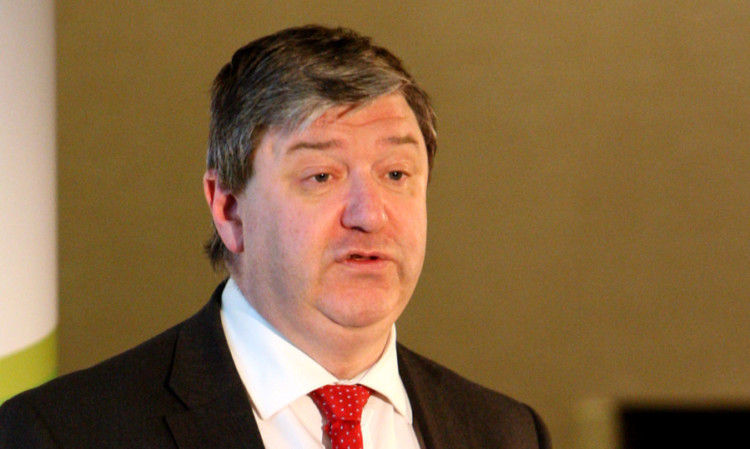It appears that the UK Government will not stand in the way of an increase in coupled payments if the Scottish Government can negotiate it with the European Commission.
That was the clear message from Defra farm minister George Eustice as he addressed the NFU Scotland annual meeting at St Andrews.
Scottish beef producers in particular have long called for an increase in the Scottish Beef Calf Scheme, the only payment in the new CAP which is coupled to production by means of a headage payment.
“I know how important these are in Scotland and the UK Government has already negotiated a position where 8% of the budget can be used in this way,” Mr Eustice said.
“That is double the present level.
“It is important to realise that these payments come from within the Scottish budget.”
Although not firmly committing to the move, he indicated that Defra would not object to Scotland raising the coupling level to somewhere between 12% and 15%.
But the Scottish Government had not yet, he maintained, made a firm request to the European Commission.
Mr Eustice, who is a Conservative MP and hails from a family farm in West Cornwall, did however point out that if the Scottish Government was to secure permission to increase coupling it would also have to bear the cost of EU disallowances if the scheme was not administered properly.
He came under considerable pressure from the floor over the infamous internal convergence allocation made back in November.
This saw £190 million of EU money which could all have come to Scotland being spread equally across the four UK administrations.
The money was intended to level out CAP payments across the EU and with Scotland receiving the lowest Pillar One (direct payments) and Pillar Two (rural development) funding on a per hectare basis it seemed reasonable to expect Scotland to receive at least the lion’s share.
Not so argued Mr Eustice. Scotland had one of the largest per farm rates of payments in the EU.
He did, however, confirm that a review would take place in 2016.
Monday also marked the first serious salvo in the independence referendum debate, at least as far is farming goes.
There has been much talk of the Better Together campaign being fought by “Tory toffs “ but Scottish Secretary Alistair Carmichael fits neither description.
As Liberal Democrat MP for Orkney and Shetland, and with a distinctively Scottish accent, this former procurator fiscal was on home territory and wasted no time in arguing for Scotland to stay within the UK.
Many of the points he made were not new but they were made with a degree of determination.
The independence vote was the most fundamental political decision most people would make in their lifetime, he said.
The consequence of a Yes would be felt in the urban areas but, he argued, rural areas would be even more affected.
“For farmers EU membership is incredibly important and if we choose to become a new member state we would need to reapply.
“That is not an opinion, it is a question of law.
“The EU is a treaty-based organisation and the UK is the signatory.
“In the event of independence the rest of the UK would continue as an EU member.
“There will be no automatic right of entry for Scotland.
“The Scottish Government’s White Paper suggested a way in through the back door by using Article 48 but that is a dead end.
“Article 48 has never been used for this purpose.”
No one knew, he added, how long it would take Scotland to negotiate EU entry or at what level farm support would be set.
New member states, such as Croatia, had accepted it would take 10 years for their payments to be phased in and they were unlikely to support a Scottish “fast track”.
“Make no mistake, any gap in EU membership would be devastating for Scottish farming,” Mr Carmichael said.
